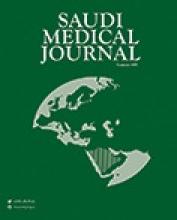Abstract
OBJECTIVE: To determine the prevalence of cagA+ and iceA genotypes among Helicobacter pylori (H. pylori) isolates from a group of Saudi patients with gastric complaints, and to find out any significant correlation between these strains and severe gastric clinical outcomes such as peptic ulcer and gastric cancer in Saudi population.
METHODS: A total of 1104 gastric biopsies from 368 patients who presented with symptoms suggestive of chronic gastritis, peptic ulcer disease, or gastric carcinoma were taken from the main hospitals in the Western region of Saudi Arabia from July 2004 to July 2005. We cultured the samples for H. pylori and a polymerase chain reaction was carried out to check for the presence or absence of cagA gene and the status of iceA genotypes.
RESULTS: Among the 368 suspected patients to be infected with H. pylori by means of clinical features and endoscopic findings; 103 (28%) were positive using culture technique. The relation of the presence of cagA and the development of cases to gastritis and ulcer was statistically significant (p=0.0001). Furthermore, this study revealed that 100% of ulcer cases were infected with iceA1 with a statistically significant correlation (p=0.0001), while 94.6% of gastritis and 90.9% of normal were infected with iceA2 (p=0.0001). Moreover cagA+/iceA1 combined genotypes was statistically correlated with peptic ulcer (100%) but not cagA-/iceA1 (0%; p=0.0001).
CONCLUSION: Certain H. pylori genotypes were more virulent than others. Multiple clinical implications based on these finding might be studied further.
- Copyright: © Saudi Medical Journal
This is an open-access article distributed under the terms of the Creative Commons Attribution-Noncommercial-Share Alike 3.0 Unported, which permits unrestricted use, distribution, and reproduction in any medium, provided the original work is properly cited.






